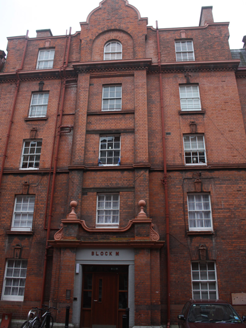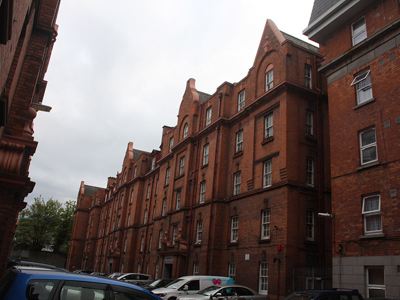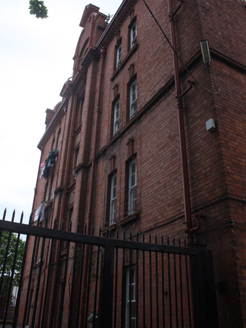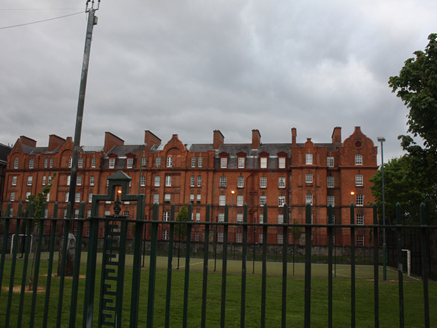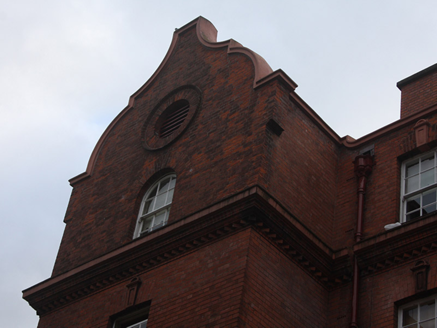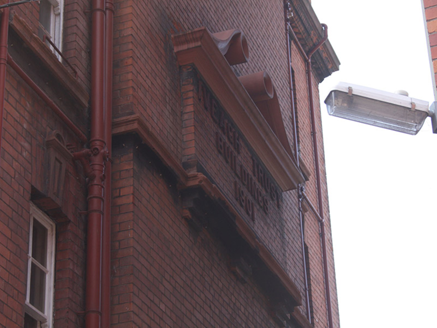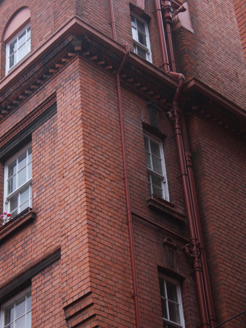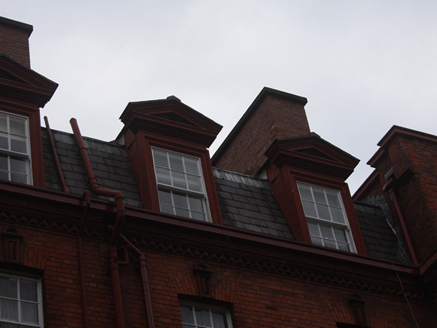Survey Data
Reg No
50110029
Rating
Regional
Categories of Special Interest
Architectural, Historical, Social, Technical
Original Use
Apartment/flat (purpose-built)
In Use As
Apartment/flat (purpose-built)
Date
1900 - 1905
Coordinates
315264, 233212
Date Recorded
27/04/2017
Date Updated
--/--/--
Description
Detached five-storey block of flats, dated 1901, having seventeen-bay front (east) elevation and nineteen-bay rear elevation. Comprises three sub-blocks, L-N, entrances articulated, two of which have three-bay slight projections with central breakfronts topped by curvilinear gables and third (southernmost) having L-plan three-bay arrangement, foot of 'L' being south elevation of block and having curvilinear gable to its east end. Three-bay south elevation articulated to middle bay. Rear elevation comprises similar sub-blocking to front, with three curvilinear gables and one triangular gable. Mansard slate roof, having terracotta ridge tiles, terracotta copings to projections and to south elevation, dormer windows to some bays where roof slope is presented exposed, continuous terracotta cornice with sawtooth brick course forming sill course to attic windows, terracotta eaves course, red brick chimneystacks, and some cast-iron rainwater goods. Red brick walling, laid in Flemish bond, with granite plinth course. Brick panel to north elevation having scrolled terracotta open-topped pediment and terracotta lettering reading 'Iveagh Trust Buildings 1901'. Oculi to east and west gables of southernmost bay, having moulded brick surrounds and louvered vents. Round-headed window openings to top floor of curvilinear gables, square-headed elsewhere, with sliding sash windows, mainly six-over-six pane, but having four-over-four pane to short elevations and to some bays elsewhere, and double two-over-two pane to some bays of rear, some having moulded terracotta sills and enlarged terracotta keystones, some set within round-headed recessed panels. Some blind bays to rear elevation. Terracotta platband forming sill course to ground floor windows, moulded terracotta stringcourse forming sill course to second floor windows. Dormer windows have terracotta pediments and surrounds. Square-headed door openings with rendered surrounds and recent timber battened doors, flanked by pilasters supporting terracotta entablature with ball finials. Set in close proximity to two similar blocks of flats, built between 1894 and 1901, separated by narrow hard-surfaced yards. Flanked by stone boundary walls to west, north, and south, and overlooking similar block of flats to east, and Cabbage Patch Graveyard to west, latter now used as public park.
Appraisal
Forming part of a group of early social housing flat blocks, this building makes an important contribution to the architectural character of the district and to Dublin's social history. The façades are articulated and enhanced by decorative brick and terracotta, while the projecting stairs halls create an interesting and unusual rhythm. Designed by Robert J. Stirling and erected by Messrs Meade and Co., these flats were constructed as part of an innovative urban project funded by The Iveagh Trust. The Trust, established by Edward Guinness, first earl of Iveagh, sought to improve the living conditions of the poor in the vicinity of St. Patrick's Cathedral. Dark and unhygienic tenements were demolished and these flats were built to provide a better standard of living with light, ventilation, and cleanliness to the forefront of the design.
